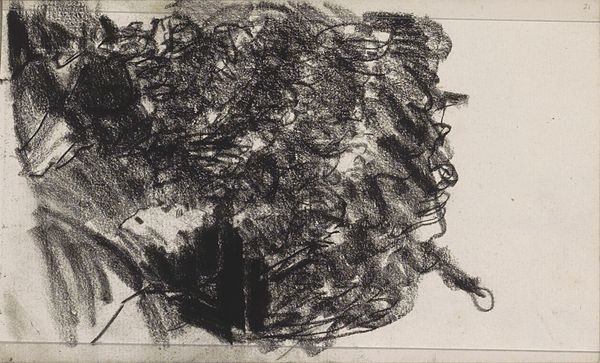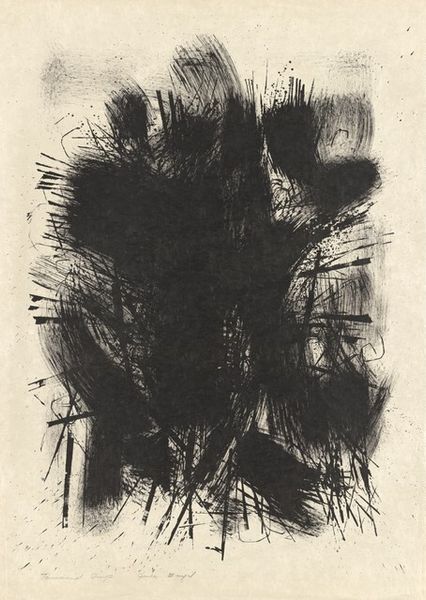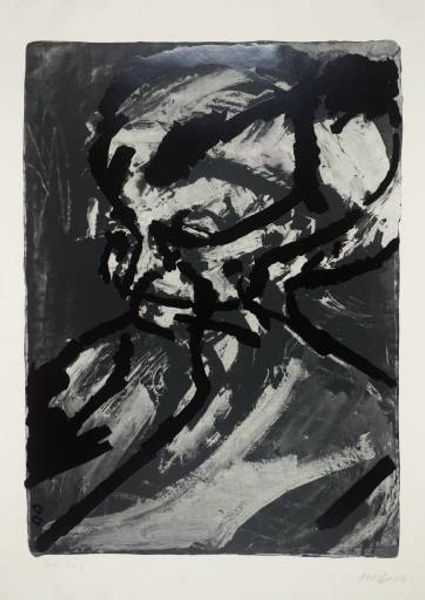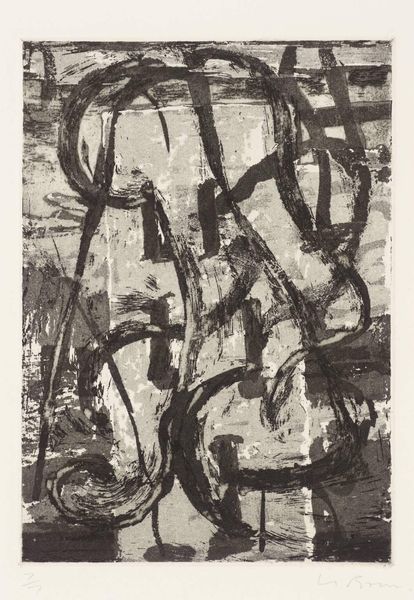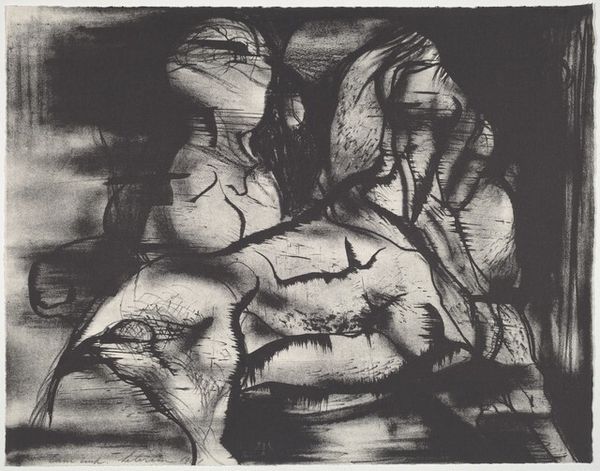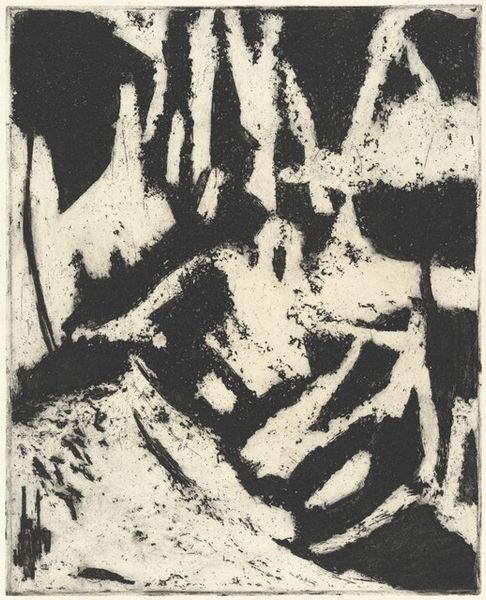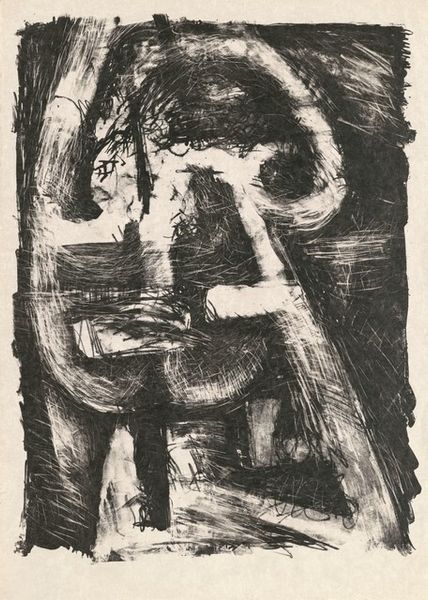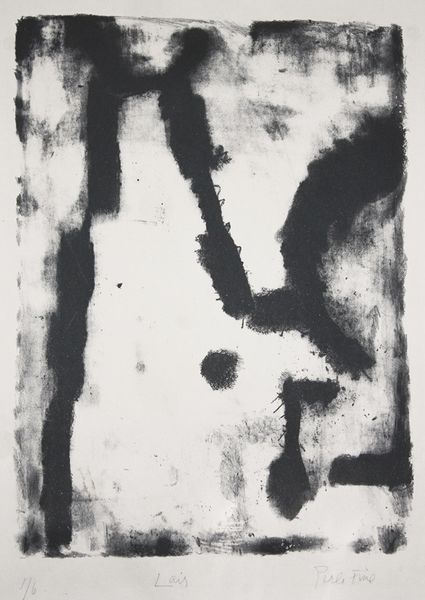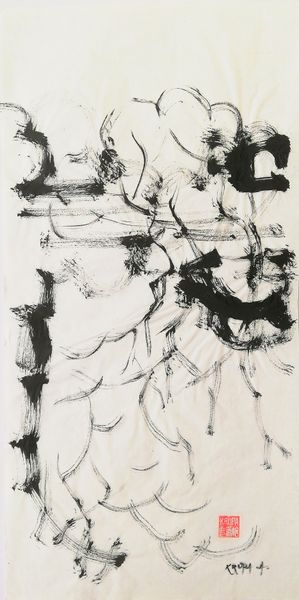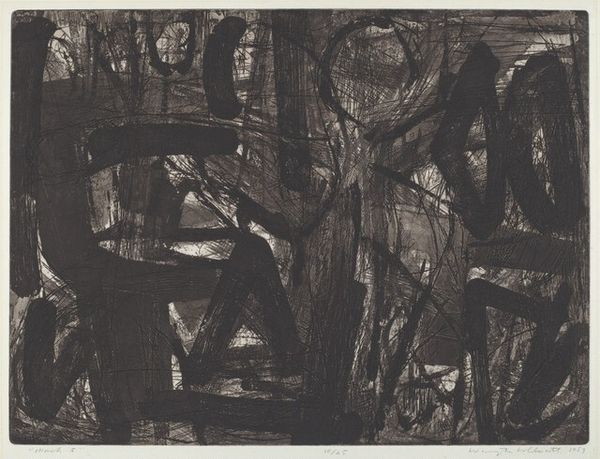
drawing, print, ink
#
abstract-expressionism
#
drawing
#
ink drawing
#
ink painting
# print
#
pencil sketch
#
ink
#
abstraction
#
line
Copyright: National Gallery of Art: CC0 1.0
Editor: This untitled work by Reuben Kadish from 1961, executed with ink, presents a study in stark contrasts. The heavy black inks seem to wrestle with the untouched white of the paper. What underlying societal currents might have fueled this raw, almost violent energy? Curator: That’s an interesting entry point. Kadish’s work, especially during this period, exists within a specific historical frame. Think about the Cold War anxiety, the ever-present threat of nuclear conflict. How do you see that potentially playing out in an abstract work like this? Do the clashing forms feel confrontational? Editor: Definitely confrontational. There's this tension between the aggressive mark-making and the negative space, which, paradoxically, feels equally assertive. Was abstraction in the ‘60s a way to grapple with complex, even unrepresentable, anxieties? Curator: Precisely. Abstraction allowed artists to move beyond literal representation, engaging with feeling and affect in a way that was deeply resonant with the era's psychological landscape. But also consider the art world itself. Abstract Expressionism had become a dominant force, carrying significant cultural capital. Do you think this piece reinforces or challenges those established norms? Editor: It feels like a challenge, actually. While clearly rooted in Abstract Expressionism, the rawness, the almost brutal simplicity, feels like a deliberate rejection of the movement’s more polished iterations. The black ink dominates the white canvas with such force. Curator: Exactly. Kadish uses the tools, but his own historical, political context subtly undermines the heroic narratives often associated with that style. It forces us to consider not only the artist’s intent, but the entire network of institutions and beliefs that gave rise to the work and shape its meaning. Editor: So, it's almost a push and pull: engagement with the dominant style but also subtle resistance of the status quo? I hadn’t considered that. Curator: It's often through these tensions that we can really understand the complexity and public role of art within a particular time.
Comments
No comments
Be the first to comment and join the conversation on the ultimate creative platform.
